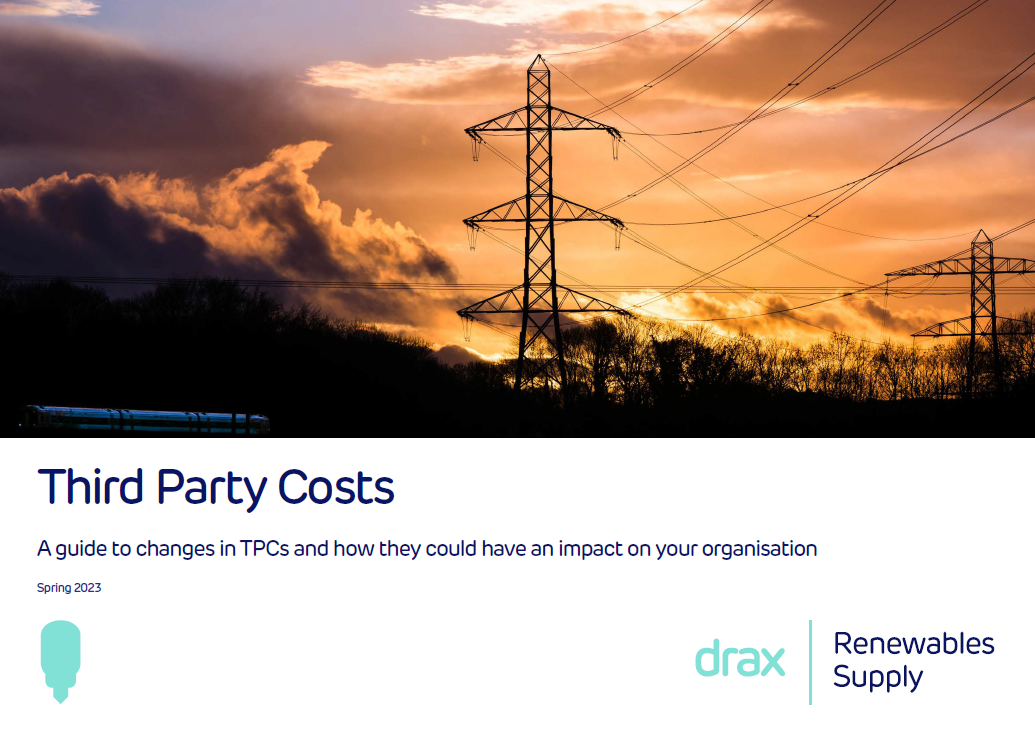Our Spring 2023 Third Party Costs (TPCs) guide: get expert forecasts and insights
Following the uncertainty and change in the energy market last year, we’ve updated our TPCs guide. Download it for free at the bottom of this page.
This new edition provides insights into what’s happened and the current regulatory landscape for TPCs, plus clear forecasts for 2023 and beyond. With costs so dependent on the level of inflation and national demand, we’ve also included some scenario analysis.

The substantial increase in wholesale prices means the TPCs portion of a typical energy bill has gone down from 60% to around 40%. However, with the underlying charges for TPCs at their highest point ever, even the slightest changes to them can significantly impact your energy costs.
Here's an overview of our insights on the key TPCs:
Distribution Use of Systems (DUoS): Rising due to lower national demand, higher inflation and expected impact of electricity network charging reforms. The Significant Code Review is delayed.
Transmission Network Use of Systems (TNUoS): Increases fuelled by inflation expectations, the generation revenue cap and changes in Transmission Demand Residual (TDR) charges.
Balancing Services Use of Systems (BSUoS): Significant rises due to increased volatility, CMP308 and the likely impact of CMP361.
Capacity Market (CM): T-1 2022/23 has already delivered. Going up, as T-1 2023/24 and T-4 2026/27 auction prices continued to outturn high.
Renewables Obligation (RO): Charge is increasing again due to high inflation and low national demand. Mutualisation has been triggered for 2021/22 (and will billed in 2023).
Contracts for Difference (CfD): Levy volatility’s set to continue, given current wholesale energy prices.
To see all the analysis and forecasts, complete the form below to download the full guide.
Disclaimer
We’ve used all reasonable efforts to ensure that the content in this article is accurate, current, and complete at the date of publication. However, we make no express or implied representations or warranties regarding its accuracy, currency or completeness. We cannot accept any responsibility (to the extent permitted by law) for any loss arising directly or indirectly from the use of any content in this article, or any action taken in relying upon it.

